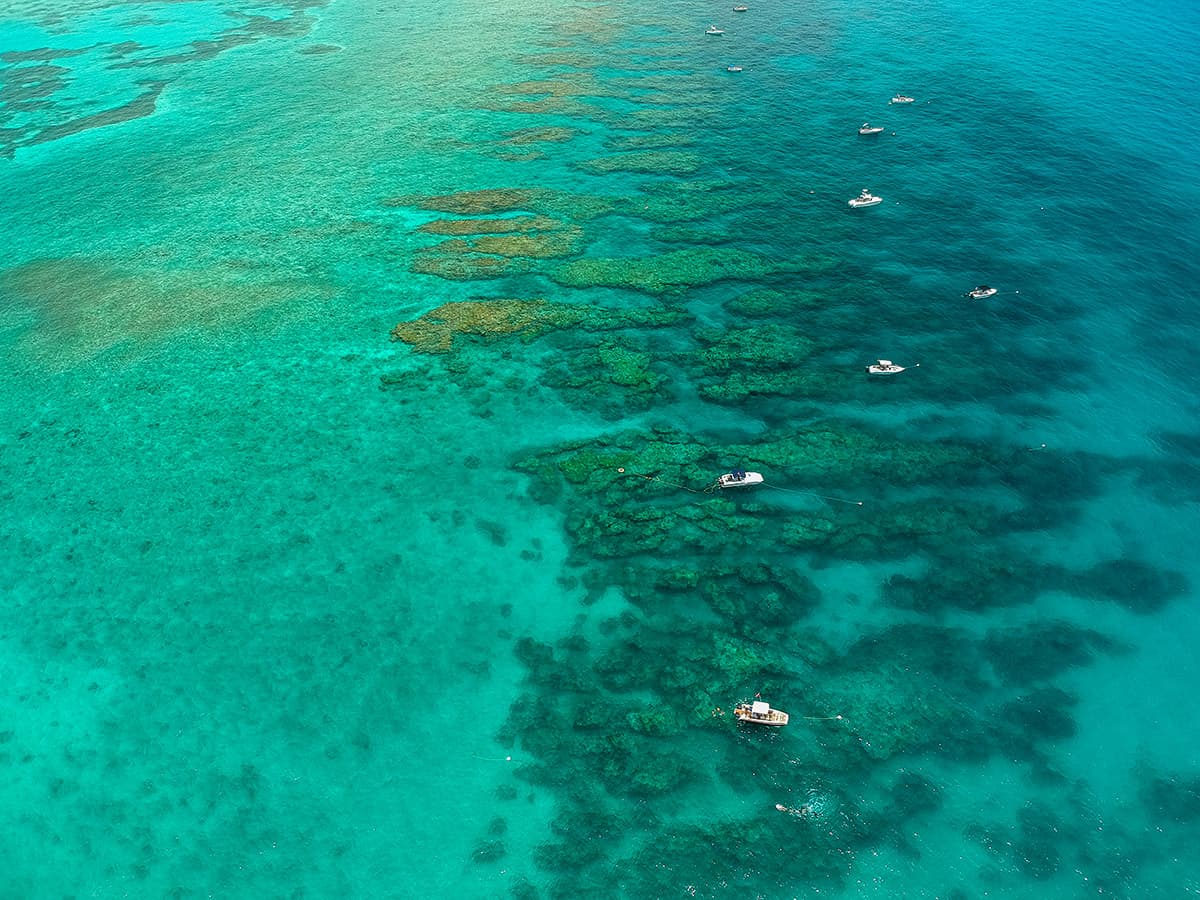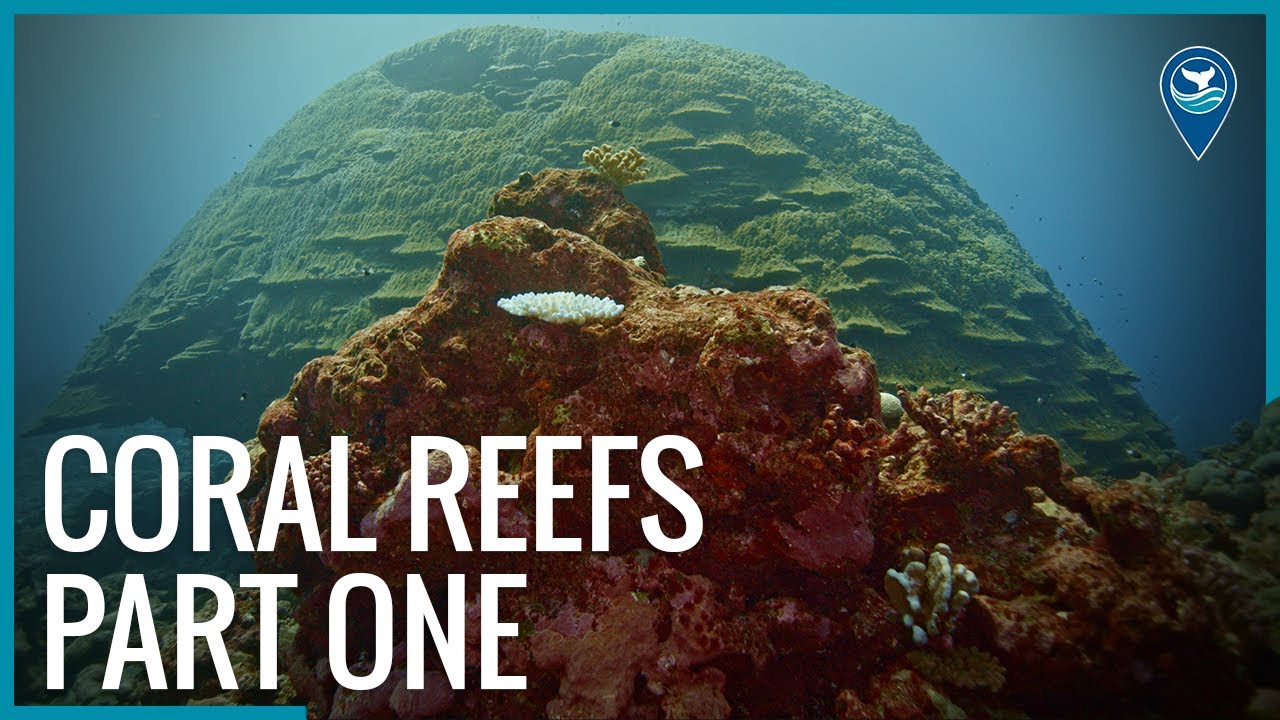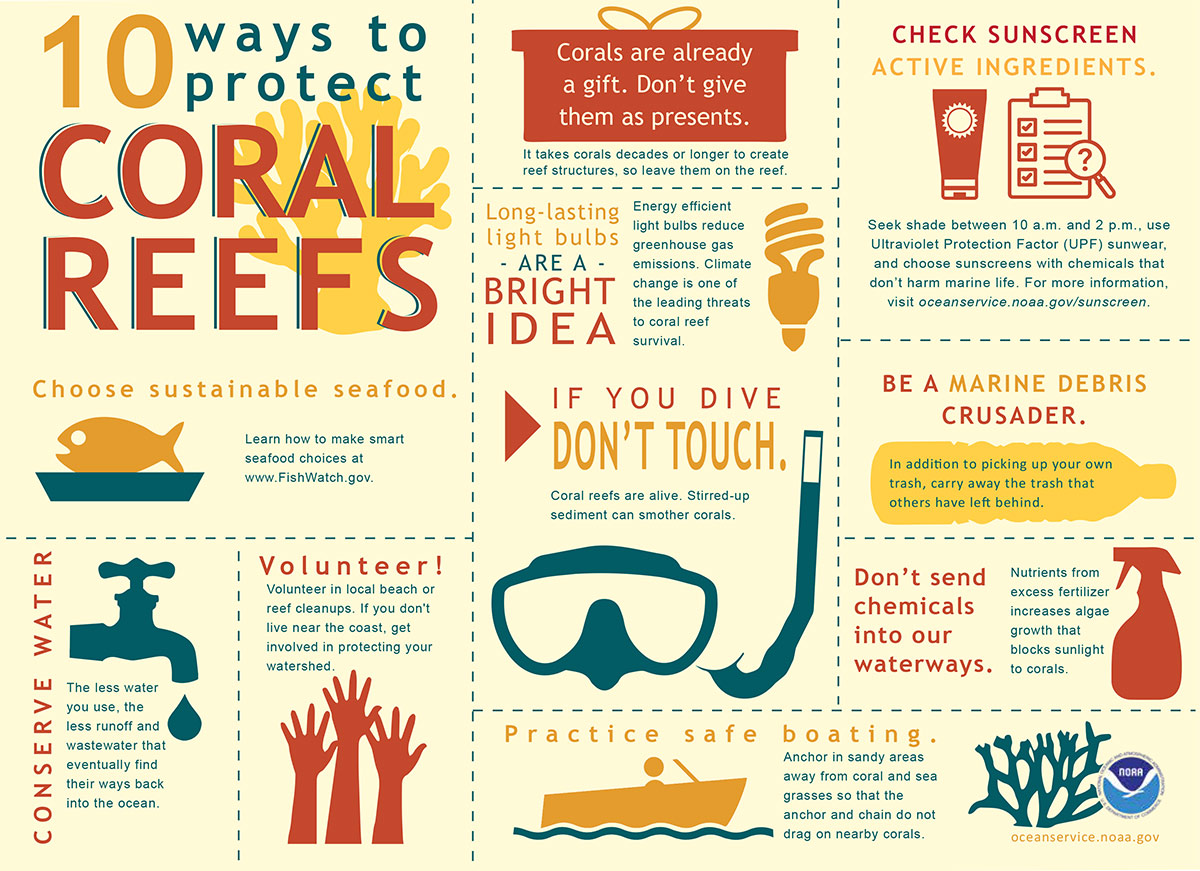Coral Reefs

Florida is the only state in the continental U.S. to have extensive, shallow coral reef formations near its coast. Florida's Coral Reef extends over 350 miles from the Dry Tortugas in the Gulf of America to the St. Lucie Inlet in Martin County.
Coral reefs are one of the most important ecosystems on our planet that protect and foster biodiversity. The cracks and crevices in and around the reefs provide many hiding places and homes for small fish and invertebrates. This diversity provides food that we eat, medicines we need, and creates an underwater world full of life waiting for you to explore.
Coral Reef Formations
Physical, chemical, and biologic processes shape coral reefs over time. In general, there are three different types of coral reef formations found around the world: fringing reefs, barrier reefs, and coral atolls.

Within Florida Keys National Marine Sanctuary, you can find North America's only coral barrier reef. These reefs tend to grow in a spur and groove structure. When viewing the reef from above, this looks like a series of successive coral "spur" ridges separated by "grooved" channels with sediment or rubble. Additionally, small patch reefs can be found in between the islands and the outer reef.
Florida's Coral Reef was built over thousands of years, a few centimeters at a time, by many different calcifying creatures, and every fish and tiny invertebrate that lives here has an important role in building this community. Hard corals, sea fans, and sponges provide hiding and living spaces for many animals. Urchins, snails, and herbivorous fish keep the reef clean by grazing on algae. Large predators patrol the reef and help maintain balance in the food web.
The foundation of this community is the reef, built by hard corals that secrete a calcium carbonate skeleton. These tiny animals grow slowly, just centimeters per year, and are sensitive to changes in their environment.
What Are Corals?
Corals are living organisms, a type of animal, related to sea anemones and jellies. They belong to the Phylum Cnidaria and Class Anthozoa. Most corals are colonial organisms. A single coral is made up of hundreds to hundreds of thousands of individual animals, called polyps. Each tiny polyp has a mouth surrounded by a ring of tentacles, and a stomach. The tentacles are used to capture small food particles from the water column, and also to protect the coral from predators and competitors.

Corals are sessile, meaning they attach themselves to the ocean floor. They prefer to live in environments that have specific characteristics:
- a solid structure for attachment
- tropical or subtropical temperatures
- clear water with low phosphate and nitrogen nutrient levels
- moderate wave action to remove waste and bring fresh oxygen and food (plankton) to the reef
The fact that corals are picky about where they live, combined with their inability to move away from danger, makes them especially vulnerable to threats like climate change and pollution.

Types of Coral

There are many different coral species that grow in different patterns and shapes, but in general we can divide corals into two basic categories: hard and soft corals.
Hard (stony) corals have polyps with tentacles that grow in multiples of six (i.e. 6, 12, 18…). As these corals eat and grow, they secrete a rigid skeleton made of calcium carbonate. The coral colony is made up of a hard skeleton covered by a thin veneer of living tissue that contains the polyps. Hard corals are often referred to as "reef-building corals". These corals grow very slowly. An individual coral colony may grow only a half-inch to 7 inches (1-18 cm) a year, depending on the species. Hard corals come in many growth forms, including boulder, branching, pillar, flowering, cup-like, leafy, and plate or sheet form.
Soft corals do not produce a rigid calcium carbonate skeleton. Instead, they secrete a more flexible skeleton that contains a central core made of the protein "gorgonin" and outer layer called "the rind". Their polyps have a ring of eight tentacles. Soft corals generally come in two growth forms: encrusting and branching.


Coral Nutrition
Most corals feed at night. Corals eat by catching tiny floating animals, called zooplankton. The coral polyps come out of their skeletons at night to feed, stretching their long, stinging tentacles to capture critters that are floating by. Prey are pulled into the polyps' mouths and digested in their stomachs.
Most reef-building corals have a unique partnership with tiny algae called zooxanthellae. The algae live within the coral polyps, using sunlight to make sugar for energy. This energy is transferred to the polyp, providing much needed nourishment. In turn, coral polyps provide the algae with carbon dioxide and a protective home.
Coral Reproduction
Corals can reproduce both asexually and sexually.
Corals reproduce asexually by budding or fragmentation. Through budding, new polyps "bud" off from parent polyps to form new colonies. In fragmentation, an entire colony (rather than just a polyp) branches off to form a new colony. This may happen, for example, if a larger colony is broken off from the main colony during a storm or boat grounding.


In terms of sexual reproduction, coral larvae are either fertilized within the body of a polyp or in the water, through a process called "spawning". In some areas, mass coral spawning events occur one specific night per year and scientists can predict when this will happen.
The majority of coral species are considered hermaphroditic broadcast spawners. Hermaphroditic corals, such as boulder star coral (Orbicella faveolata) and grooved brain coral (Diploria labyrinthiformis) produce both sperm and eggs at the same time.

For other corals, such as elkhorn (Acropora palmata) and great star corals (Montastrea cavernosa), all of the polyps in a single colony produce only sperm and all of the polyps in another colony produce only eggs. These gametes must find one another in the water column after being released in order for fertilization to take place.
Once in the water, larvae 'swim' to the ocean surface. If they are not eaten, they eventually settle to the ocean floor and attach to a hard substrate. Once attached, they metamorphose into a coral polyp and begin to grow, dividing in half. As more and more polyps are added, a coral colony develops and eventually begins to reproduce.
Protecting Coral Reefs
The Florida Keys are home to North America's only coral barrier reef, and more than 40 species of reef-building coral, including the federally protected staghorn and elkhorn corals.

Coral reefs are one of the most important ecosystems on our planet that protect and foster biodiversity. These ecosystems take a long time to form — in fact, it took thousands of years for the reefs we see today to grow to the size they are now. Coral reef ecosystems are in danger of collapsing because of the many rapid changes taking place around them, such as warming ocean temperatures, pollution, ocean acidification, and disease. The threats to coral reefs are a cause for concern, but there is still hope. Protecting coral reef habitats is one of the highest priorities for Florida Keys National Marine Sanctuary.
Videos: Are Reefs in Trouble? How Are We Helping Reefs?
In addition to protecting coral reefs, it is important to restore reefs that have been degraded. In 2019, NOAA announced the unprecedented large-scale restoration initiative known as Mission: Iconic Reefs. This is a long-term, NOAA led and partner-driven program to restore coral cover at seven reefs in Florida Keys National Marine Sanctuary.
Coral reefs have protected and provided for the Florida Keys over thousands of years, and are intricately tied to local commerce and culture. Whether earning a living off the bounty of the reef, or resting and recharging in its beauty, we all have a part to play in protecting and preserving this habitat. Find out how to get involved with safeguarding coral reef habitats in Florida Keys National Marine Sanctuary.
Even if you never visit a coral reef, you can "care from anywhere":
- Clean up your local environment
- Choose sustainable seafood
- Check sunscreen ingredients for harmful chemicals
- Check cleaning products for harmful chemicals
- Spread the word and help teach others


